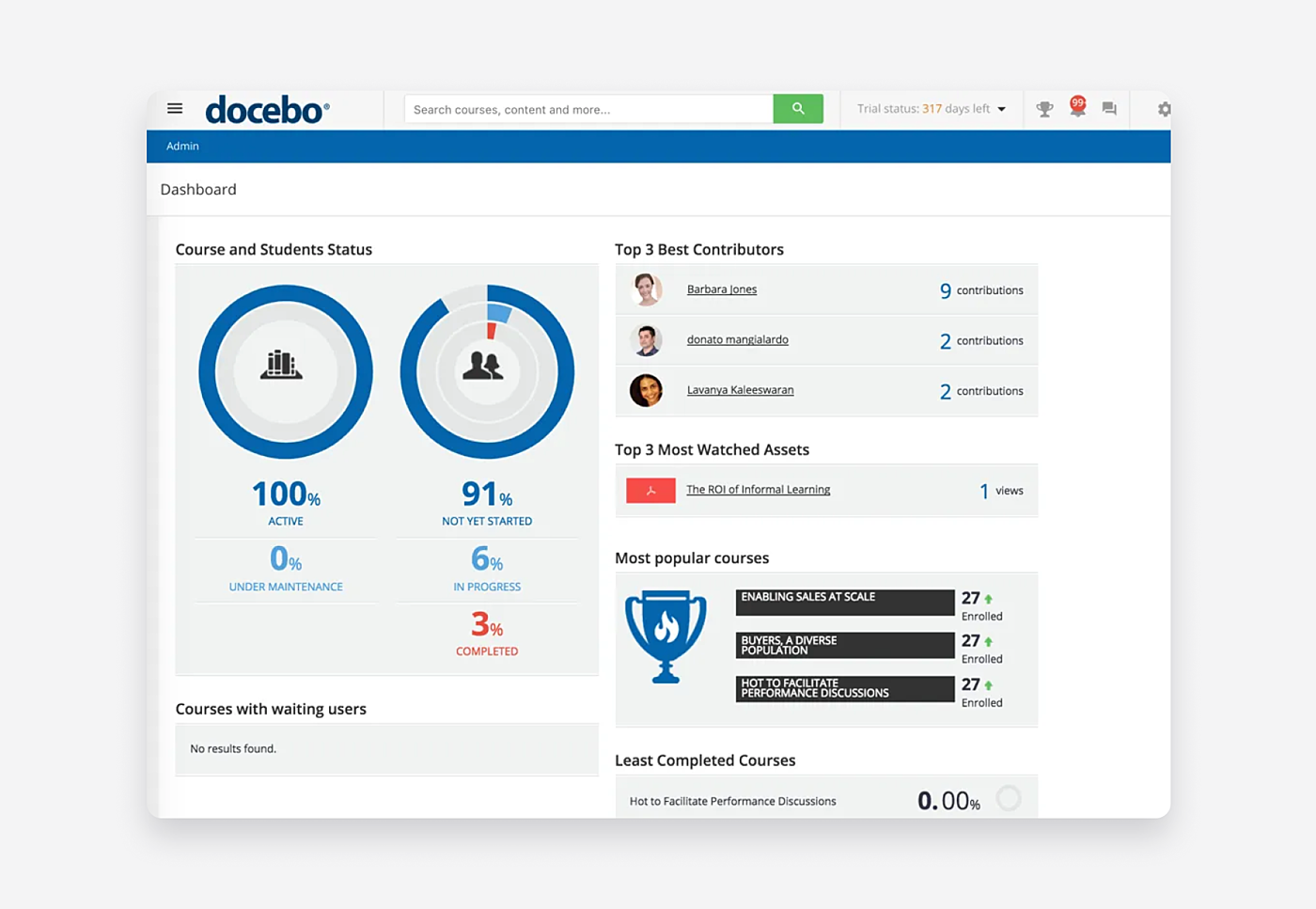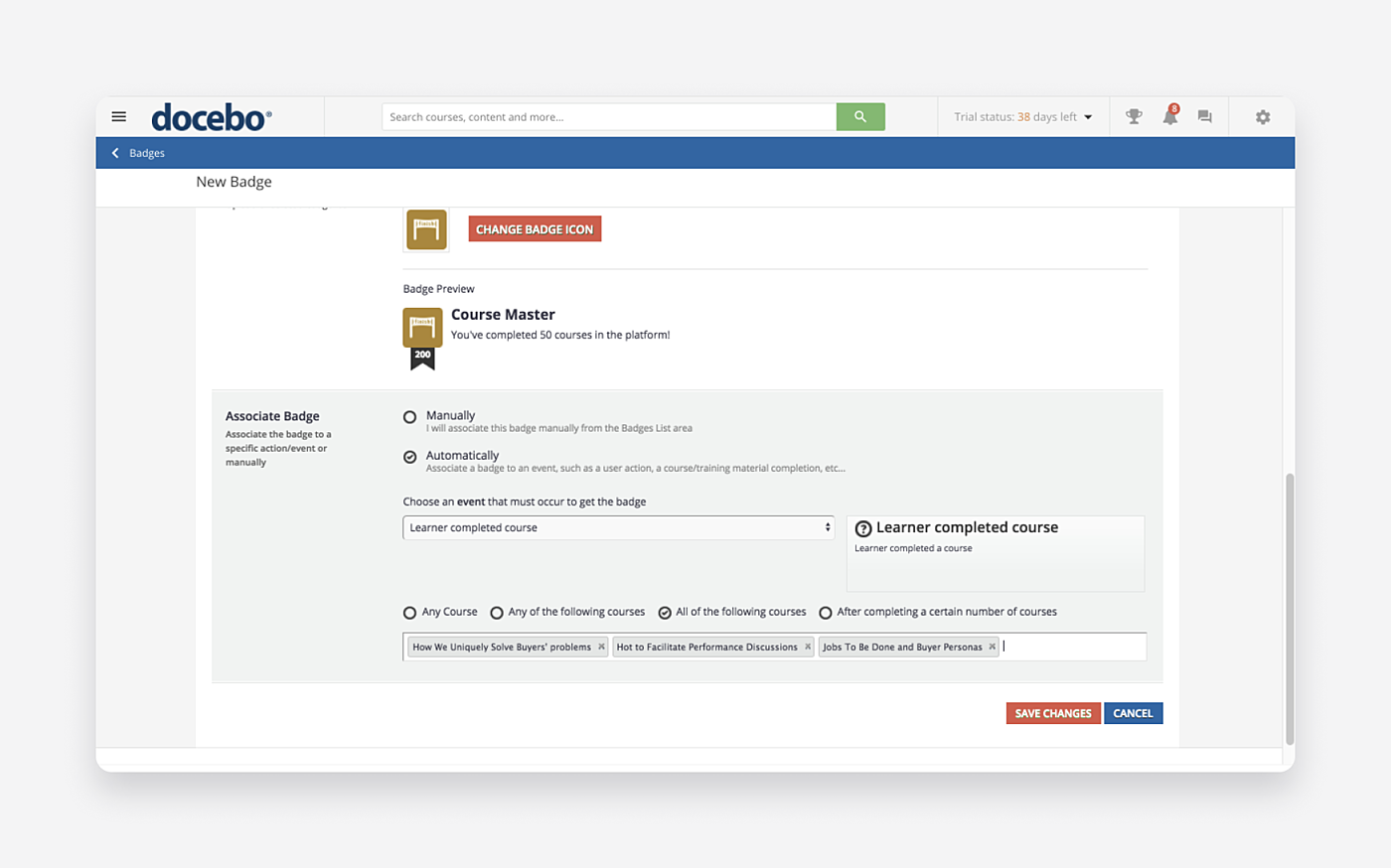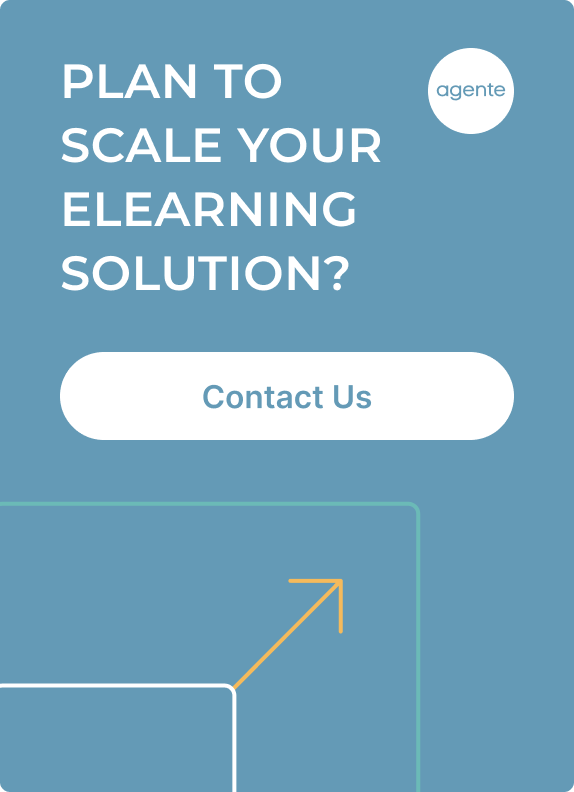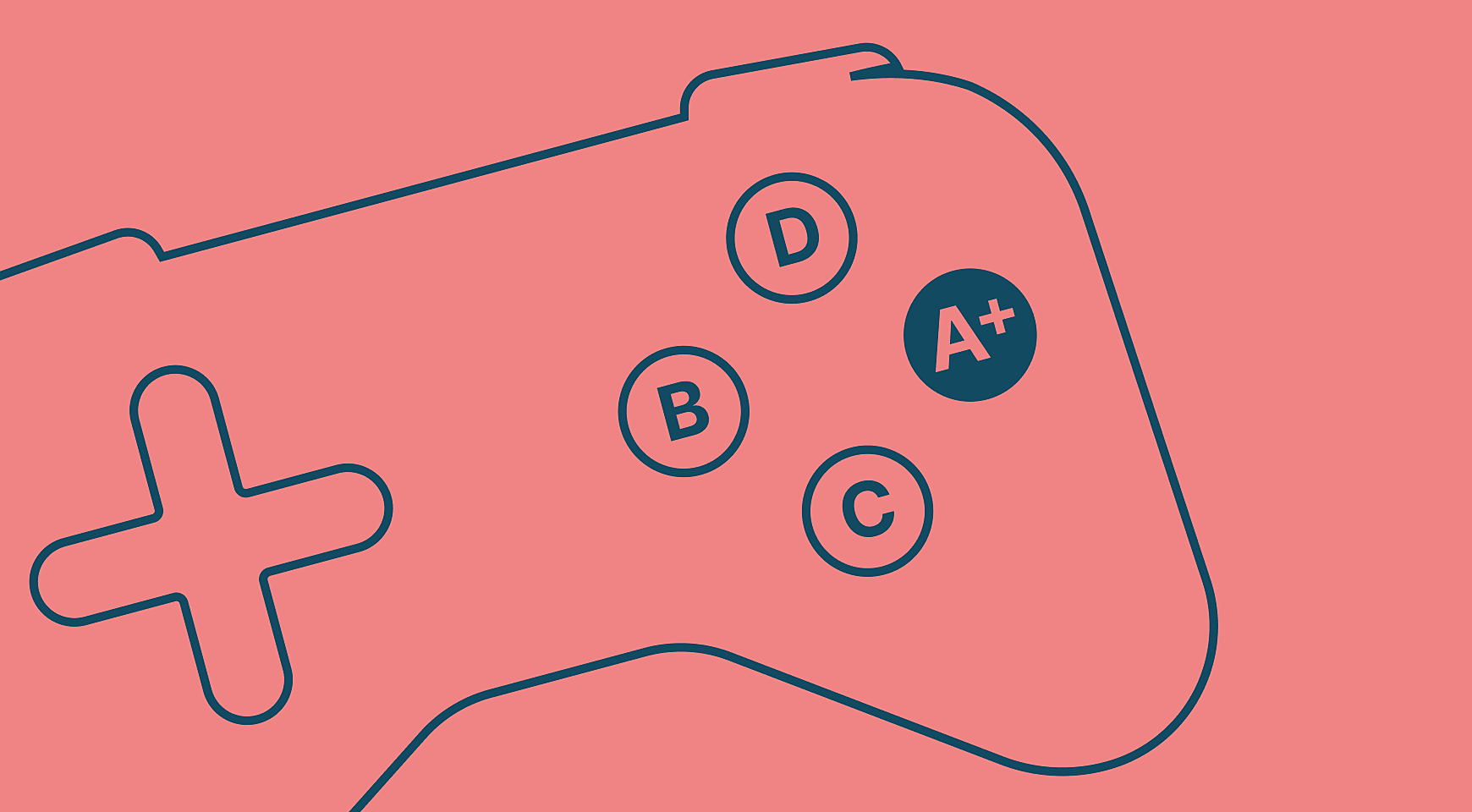
Owners of learning management systems often encounter a range of difficulties when it comes to managing and operating their platforms. One common issue they face is a lack of user engagement and motivation. Many learners may find the traditional learning methods boring and uninspiring, resulting in a lack of interest and reduced participation.
Fortunately, there is a solution: gamification in LMS. By integrating game-like elements, gamification can transform the learning experience into something interactive and enjoyable, resulting in increased learner engagement and motivation leading to improved knowledge retention and higher course completion rates.
In other words:
Whether you plan to make an e-learning platform like Udemy, a mobile app like Duolingo, or an LMS for healthcare, you'll face the entangled world of app gamification, and will be forced to jump in. Otherwise, you'll lag behind your competitors.
In this article, we guide you through all that you need to know about implementing gamification in online learning and we share our experience-based educational website design ideas.
Factors Influencing Gamification Upsurge
The past six years have witnessed a global growth in gamification revenues (CAGR = 37.1%).
And it’s all for a reason:
- Historic levels of private investment flowing to game-based learning companies;
- Uptake of corporate game-based learning;
- Increasing availability of simple tools to integrate game elements into the learning process;
- Introduction of multiple realities: augmented, virtual and simulated;
- Emergence of gamified mental exercises based on neuroscience;
- Worldwide implementation of the Internet of Things (IoT).
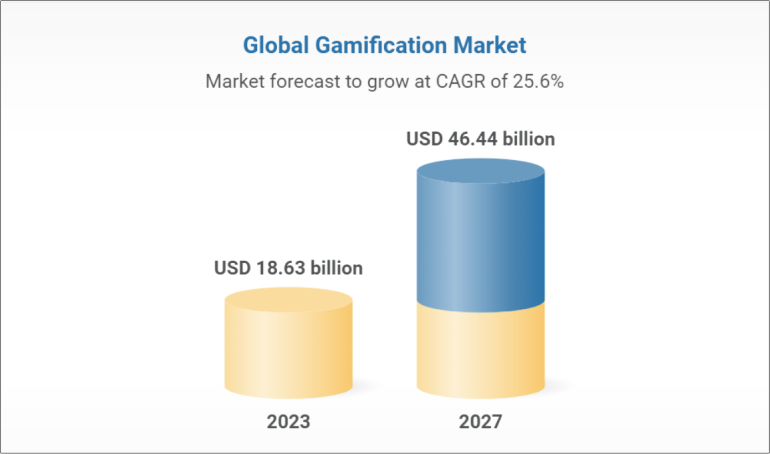
Source: Research and Markets
Why Gamification in eLearning Works
Gamification in LMS platforms can upgrade e-learning by making the process more engaging and clearer, regardless of the type of learner or subject matter you are dealing with. And there is an exact science behind game-based learning. Endorphins.
When we are engaged in the activities stimulating our minds, our bodies release hormones called endorphins. These hormones help:
- Retain more information;
- Bring a sense of excitement and satisfaction;
- Better motivate the learner;
- Make the experience more powerful and memorable.
Self-determination Theory is one of the theories that have been applied in the context of gamification (Ryan & Deci, 2002).
What does this mean?
Gamification in LMS allows touching on three basic psychological needs: competence, autonomy, and social relatedness.
The need for competence assumes that every human strives to feel competent while interacting with the environment and influencing it.
The need for autonomy describes psychological freedom and the capability to decide and choose whatever one desires.
The need for social relatedness refers to our feelings of attachment to people and places.
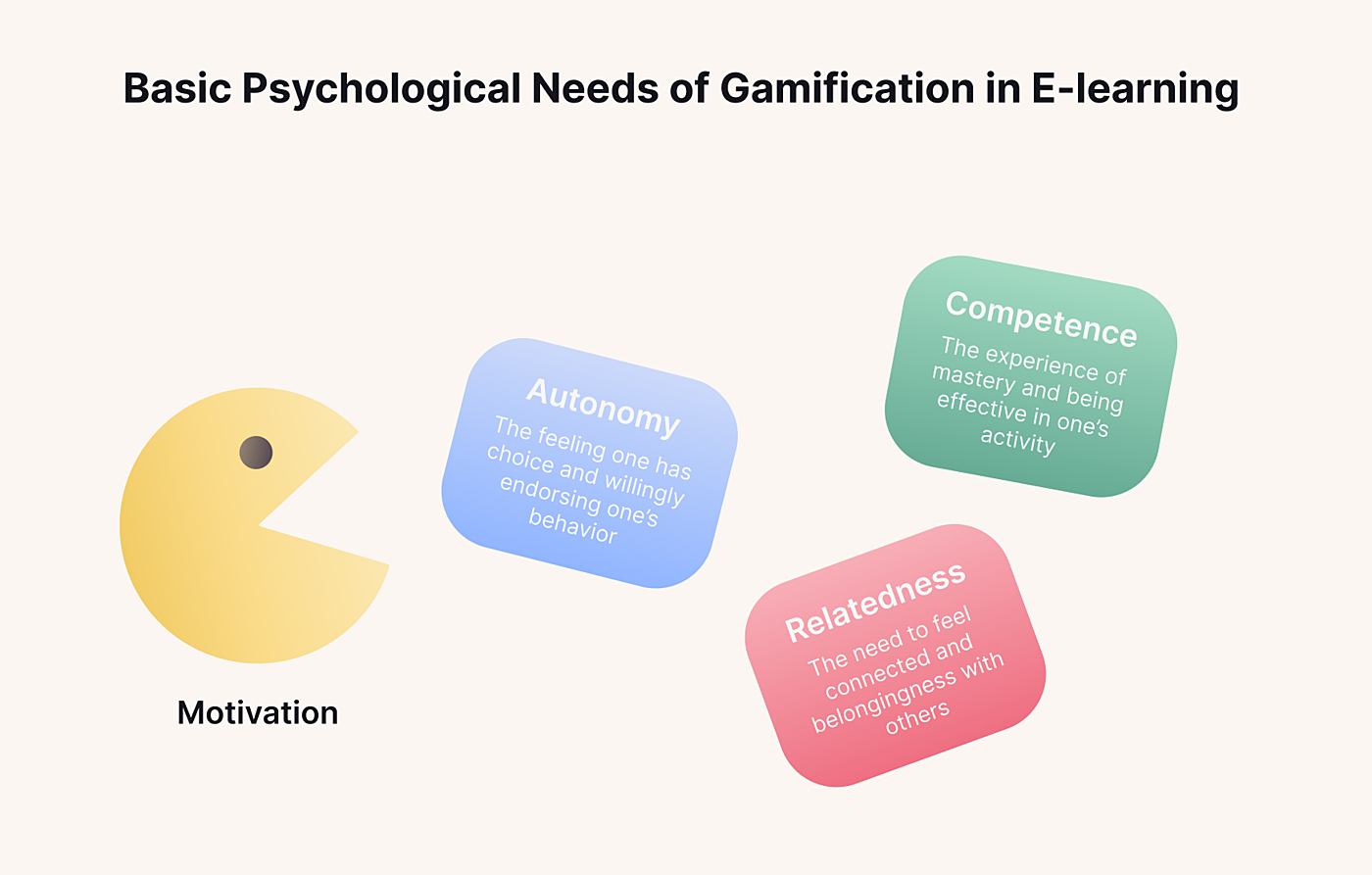
But wait, there is more:
The research conducted by Michael Salier, Jan Ulrich Hense, Sarah Katharine Mayr, and Heinz Mandl suggests that such elements of gamification of eLearning as:
- Badges
- Leaderboards
- Performance graphs
- Avatars
- Meaningful stories
- Teammates
...help satisfy all the three mentioned needs, i.e., autonomy, competence, and relatedness.
LMS Gamification Trends
Chatbots
These intelligent bots interact with users in a human-like manner and are often employed as virtual assistants.
Chatbots provide a personalized learning experience for each student, and, at the same time, they can interact with groups.
Chatbots can act as teachers assigning group work on projects and save teachers’ time on students’ work assessment.
Artificial Intelligence
We are all familiar with AI through Siri and Google Now; they help us find useful information through voice requests.
They represent instances of NLP (natural language processing) and are also used in e-learning. Instead of typing answers or questions, students can say it loud and get a response.
AI in LMS is also capable of generating personalized content, such as generating new tasks according to learners’ abilities.
Virtual Reality
VR training is the most immersive learning technology in e-learning. It engages learners with a powerful sense of presence, replicates any product or environment, and also runs scenarios that are dangerous and can’t be realized in the real environment.
Corporate training can use VR to simulate customer experience, reduce high-risk situations, and educate about harassment.
Read also: How to Add AR/VR Experiences to Your LMS
Simulated Learning
Simulated learning is similar to VR, but more accessible because it doesn’t require expensive equipment. For example, simulation of real-life situations can be presented in video games.
Read also: Education Technology Trends to Watch in 2023
Benefits of Gamifying an eLearning Platform
Enhanced e-learning experience. Follow the train of thought:
More games —> more fun —> higher level of learner engagement —> better retention.
Friendly learning environment. LMS with gamification provides a soothing, more casual environment in which students don’t feel the pressure to give correct answers only. There’s always room for experimenting and learning through your mistakes.
Instant feedback. Learners immediately know to find out what mistakes they’ve made and how to correct them.
Multiple applications. Gamification in online learning is more than welcome in every corporate area, such as induction and onboarding, product sales, customer support, soft skills, awareness creation and compliance.
When Gamification in Elearning Goes Wrong
Focusing on gamifying learning, try not to lose sight of the goals.
The primary purpose of a course is to teach, not to entertain. So be aware of the following pitfalls:
- Learners can lose sight of their goals. They might play to get the badge or reach another level without any intention of retaining the knowledge.
Therefore, the quality of the content should be engaging by itself. Game-based elements are just the icing on the cake to make it even cooler.
- Not everyone loves to play. Some people prefer older methods of processing information. Try not to impose game elements too heavily; it should be natural.
What to Avoid in Gamified LMS
When integrating gamification elements in your edTech project, there are three NOs that you should always keep in mind and steer clear from.
Read also: EdTech Market Trends in 2021
No manipulation. No subpar. No game design.
Gamification elements do not equal playing tricks with the learner ― the design must motivate and encourage the learner.
Gamification design does not mean bright video-games-like elements but much deeper components of the learning process.
Gamification elements are nothing like designing a game; they must be well-placed and not confuse the learner.
Add LMS Gamification to Your Project in 5 Steps
Now that you are completely aware of gamified learning platforms, its benefits and drawbacks, what should be done in particular to gamify your learning management system?
The e-learning gamification development process follows the standard ADDIE design model, i.e., analysis, design, development, implementation, and evaluation.
Step #1. Analysis and UX Strategy
To build the project plan, the context of learning and the audience profile should be studied and analyzed.
- Context analysis. You need to ask the following questions:
- Who are your users? Are they motivated / unmotivated learners or risk-takers
- Why does your LMS need gamification? It may be to increase user retention or decrease the number of mistakes.
- What elements of the course should be gamified?
- What mechanics should you use to gamify?
- Gamer persona analysis. According to users behavior while learning and engaging in the game, and depending on their motivation, you can identify several player types:
- Killers (confident learners);
- Achievers (motivated learners);
- Socializers (emotional, unmotivated, dependent learners);
- Explorers (risk-takers).
The product owner, PM and designer work hand-in-hand to bring to life the created UX strategy and tactics for the gamification elements and to align every customer touchpoint with the gamified elements.
You can study and identify the elements that gamification can improve in your existing learning management system if you do LMS redesign.
Step #2. Design
Next, we create a storyboard that includes the most appropriate gamification elements and activities.
Gamification elements that meet specific business objectives must be included at the design stage, fully aligned with the set learning objectives and KPIs.
What are the basic gamification principles?
- Mechanics. Mechanics can be most easily explained as the incentives used to drive the activity of the player. It means each game should have its own set of rules. The user’s response and choice within those boundaries determine the final outcome. Mechanics elements: hidden/bonus levels, scores, trophies, notifications, rankings, badges, leaderboards, dashboards, user profiles.
- Dynamics. Dynamics are the behaviors and patterns of the game that help to set constraints (like time limits) for different levels, trigger user emotions and maintain the storyline of the game. Elements: group competition, collecting stickers and other awards, collaborations, gifts, progress, challenges, achievements.
Step #3. Development
We know our audience and goals, i.e., all that is required to successfully integrate gamification design elements in the project following the defined UX strategy.
To gamify your learning management system you need to implement the design you already have and evaluate the deliverables. The system structure with the gamification components starts to connect here.
Step #4. Implementation
After implementing and delivering the gamification elements, we get a gamified LMS.
Probably the most important and complex step is when the team of software developers builds a product in full compliance with the agreed design and prototypes. Next, the QA department tests all gamification elements to identify whether they work as they are supposed to. Whatever the result, the QA team will share their feedback with the developers and request them to fix issues if there are any.
Step #5. Evaluation
Evaluation of your gamified learning management system can give you a powerful impulse for further development. Final analysis calculation of results take place here along with the post-release support and maintenance.
Development never stops as gamification in your LMS. Thanks, Captain Obvious.
Nevertheless, now it’s high time to calculate, evaluate, test, perform a UX audit to make your gamified LMS more user-friendly, engaging, and profitable.
Only by ascertaining the ROI, retention, engagement, and other performance metrics you can estimate how effective the gamification elements are in achieving the set business goals.
Basic Gamification Design Principles
According to “Gamification in Education: What is Known, What is Believed and What Remains Uncertain: a Critical Review,” which is research performed by Darina Dicheva, a professor in computer science, there are four game designing principles that must be considered when developing gamified learning platforms:
- Quick Feedback
Make sure to add and display follow-up messages as soon as the learner completes each task or its element. The process should be as clear as possible. This will promote the balancing of awards, rewards, and triggers to keep students learning. - Room to Fail
There should be no fear of failure. Similar to video games where the player can start from the last completed level, learning games should bring no stress but encourage students to take risks, achieve better results, and retry. - Progression
Visualization is the king. Just as endless tasks make the process tiresome, so progress bars and levels make the learning journey clear and transparent. Like a growing snowball, such progression helps accumulate knowledge and get ready for the final level. - Storytelling
There is always an extraordinary story behind a viral game. You can choose to make the learner a watcher, a participant, or a creator in your LMS, or you can encompass all three in one single role. It all depends on the learner personas and gamer types you have. The contents should be structured in a way that creates a narrative and players should be asked to participate in the creation of the story.
Types of E-learning Gamification
There are two types of e-learning gamification: structural and content. Both work well, and it’s up to the course creators to decide which one suits their particular course the best.
Structural type
This type of gamification suggests introducing game elements into the learning process, which do not alter the content itself.
E-learners are engaged with rewards.
For example:
The learner can earn points for watching a lecture or completing an assignment. The assignment and the video lecture itself have no game elements. But they become a challenge to deal with in order to get something or get somewhere.
So what exactly can e-learners get?
- Points for specific tasks;
- Badges for reaching certain goals;
- Achievements for going through a set of tasks and reaching several goals;
- Levels. Learners move to more complex tasks;
- Leaderboards that rank each learner’s achievement and create a healthy competitive environment;
- Social integration. Learners are encouraged to help each other while going through the course.
Duolingo is one of the elearning gamification examples. This language learning platform provides self-paced courses that integrate the above-mentioned gamification elements.
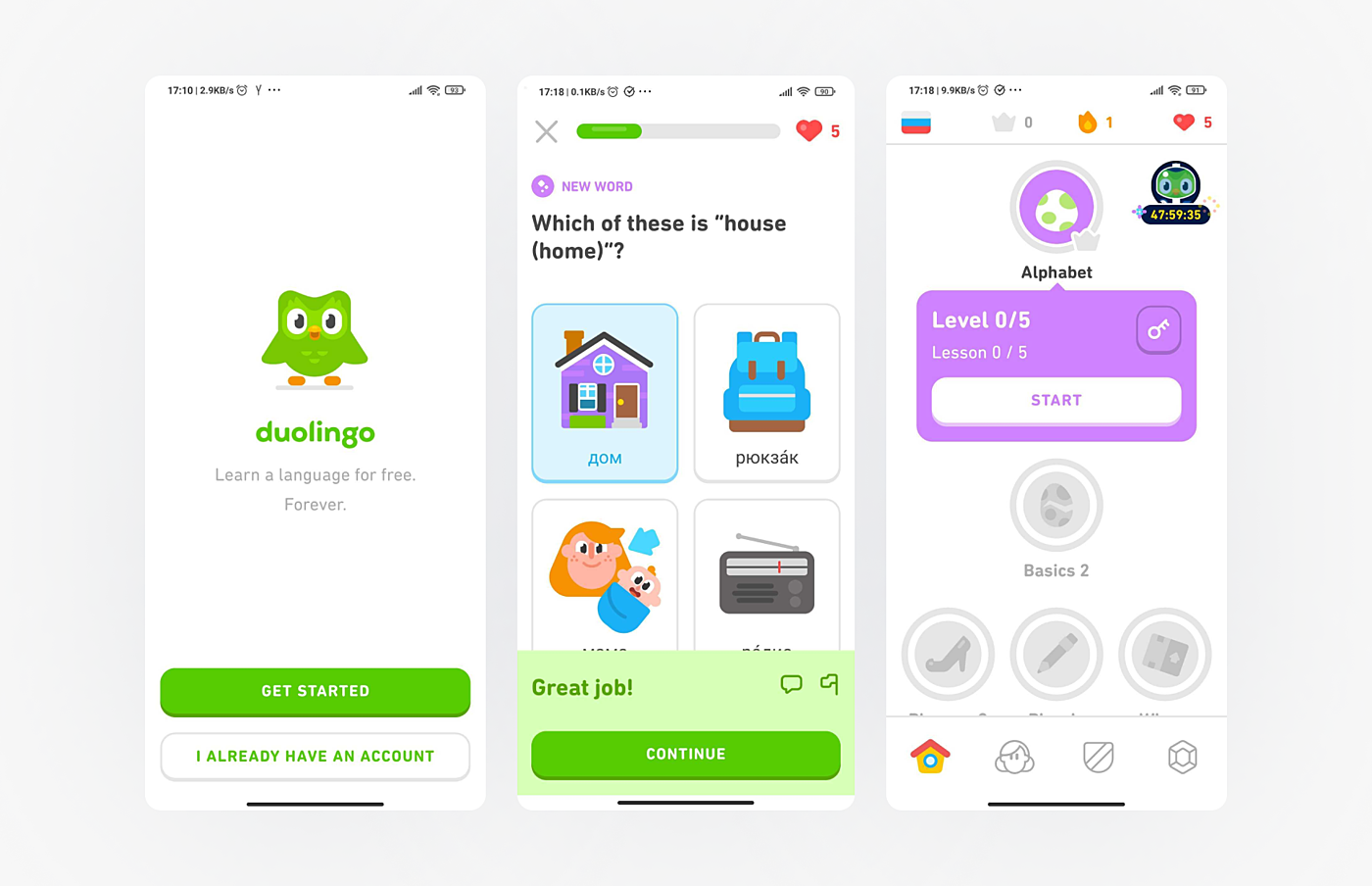 Source: Duolingo
Source: Duolingo
Talent LMS offers training online solutions for a range of industries, such as technology, healthcare, supply chains.
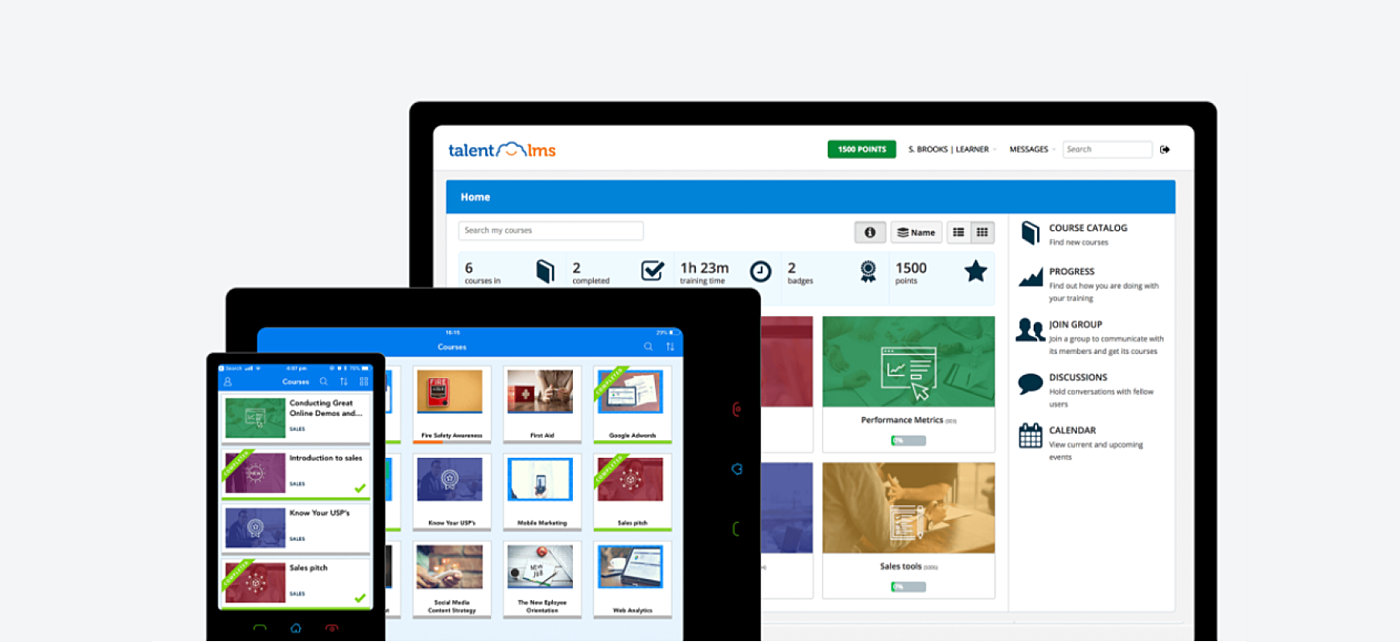 Source: Talentlms
Source: Talentlms
Content
Here, the course content itself is altered to entwine e-learning games. Hence the name.
For example:
Role-playing is an excellent format for training and courses related to decision making. Learners assume a certain role and react correspondingly in simulated life situations.
Tactical games and simulations develop strategic thinking skills.
In platform games, learners try to get from one end of a board to another while dealing with obstacles.
Medieval Swansea, an interactive historical course, would be another elearning gamification example. It allows learners to take on the role of a detective and solve a mystery.
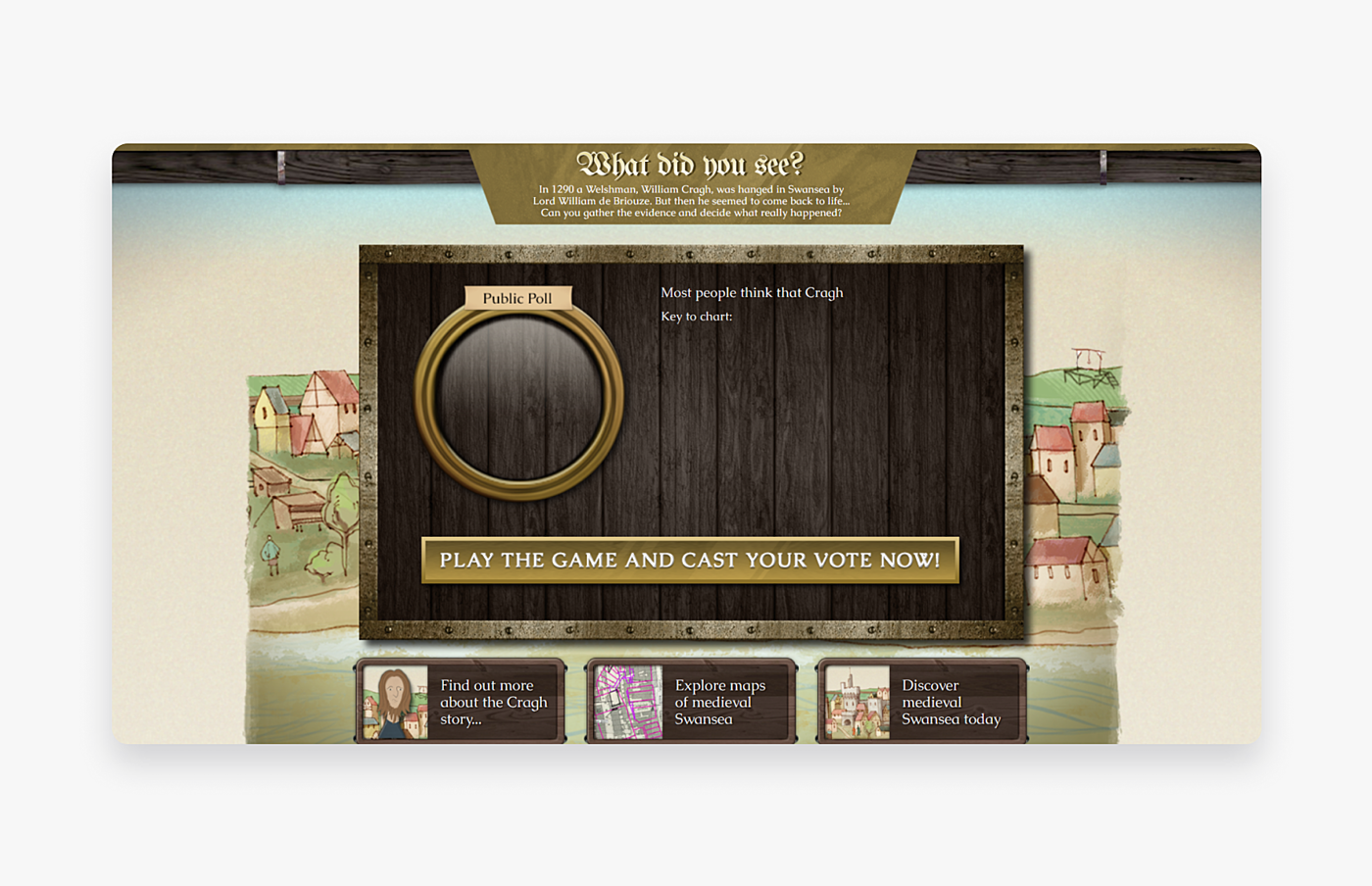 Source: Medieval Swansea
Source: Medieval Swansea
Real-Life Elearning Gamification Examples
Let’s overview a few eLearning gamification examples (elements) implementation in real life:
- Awards and dashboards
 Source: Agente
Source: Agente
- Notifications
 Source: Docebo
Source: Docebo
- Progress bar & activities

 Source: Docebo
Source: Docebo
- Dashboard & leaderboard

Source: Talented Learning
- Certification & badges

Source: Docebo
Bottom Line
Well, we have looked at examples of gamification in eLearning. Integration of gamified elements allows you to achieve specific goals, address pain points, and guarantee an engaging and immersive learning experience. Gamification helps improve learning, job onboarding, and training by supporting the learner and improving the outcomes. These are a few examples of the importance of gamification in eLearning.
Now that you know all about gamification in LMS, why not create a gamified experience in your e-learning project? You can start by looking for the most suitable eLearning gamification solutions.
An experienced team will make the process less challenging and help you bring the best-of-breed experience for your learning gamification platform to life.
Contact Agente e-learning gamification company today to discuss your next e-learning or LMS gamification project!
Rate this post!
161 ratings, average ratings is 4.6 out of 5
Frequently asked questions
Whether you represent a private business, a large enterprise or an educational institution, our e-learning platform development services will greatly improve the performance of your company.
How can I measure the effectiveness of gamification in my e-learning courses?
One way to measure effectiveness of gamification is by analyzing learners' performance and progress through assessments and quizzes. By comparing the performance of learners who have experienced gamified elements with those who have not, it is possible to identify if gamification has influenced positively to learning outcomes. Another effective method is obtaining feedback from interviewing learners to find out their perception of the gamified elements in the e-learning courses.
What are the challenges of implementing gamification in e-learning, and how can they be overcome?
Learners' resistance is one of the biggest obstacles to gamification in e-learning. It's important to explain the advantages of gamification to students and demonstrate how it can improve their learning process because some may think of it as a distraction or an an unnecessary addition to their education process. Creating engaging gamified experiences that complement the curriculum and learning objectives is another difficulty. Understanding the learning objectives and how gamification components can support them is crucial. Furthermore, it can be difficult to monitor and evaluate how well gamification is working in online education. To keep an eye on the performance, engagement, and advancement of learners, a strong tracking system must be in place. Analytics tools can be used to accomplish this, offering insights into learner behavior and achievements.
Related Posts
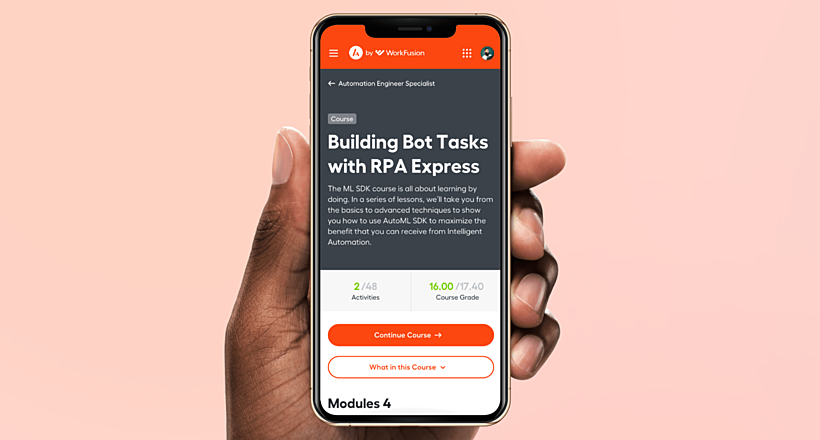
Develop Custom Corporate Microlearning Platform
Custom microlearning solutions for corporate training: Discover how to develop a tailored platform for efficient and engaging employee learning

24 January 2024
Employee Training Management Software Development in 2024: Features and Cost
Streamline your employee training with cutting-edge software solutions. Explore the features and costs of employee training management software.
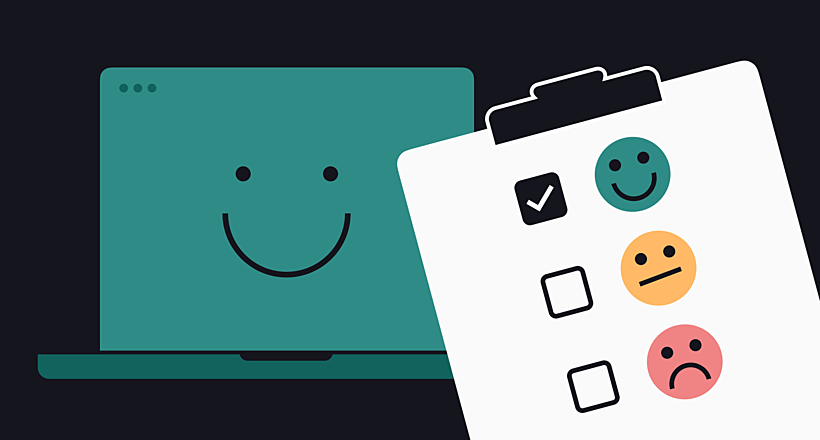
How to Design and Redesign an LMS in 2024: Benefits and Use Cases
Step into the future of learning with our guide on designing and redesigning an LMS in 2023. Discover the benefits, explore real-world use cases.

How to Create Online Course Website: A Full Guide
Discover how to build an online course website with our comprehensive guide, offering step-by-step instructions, tips, and best practices for educators.

Education Technology Trends to Watch Out In The Future
Explore the latest trends in educational technology and discover what's transforming the future of learning.

Migrating an LMS to LXP: Key Approaches to Successful Migration
Elevate employee development with a Learning Experience Platform (LXP). Our blog guides you through the process of move from LMS to LXP.
Let's talk
Is there a challenge your organization or company needs help solving? We’d love to discuss it.

Managing Director, Partner
Andrew Terehin

Thank You!
Your message has been successfully sent.
We will contact you very soon.

 Source:
Source: 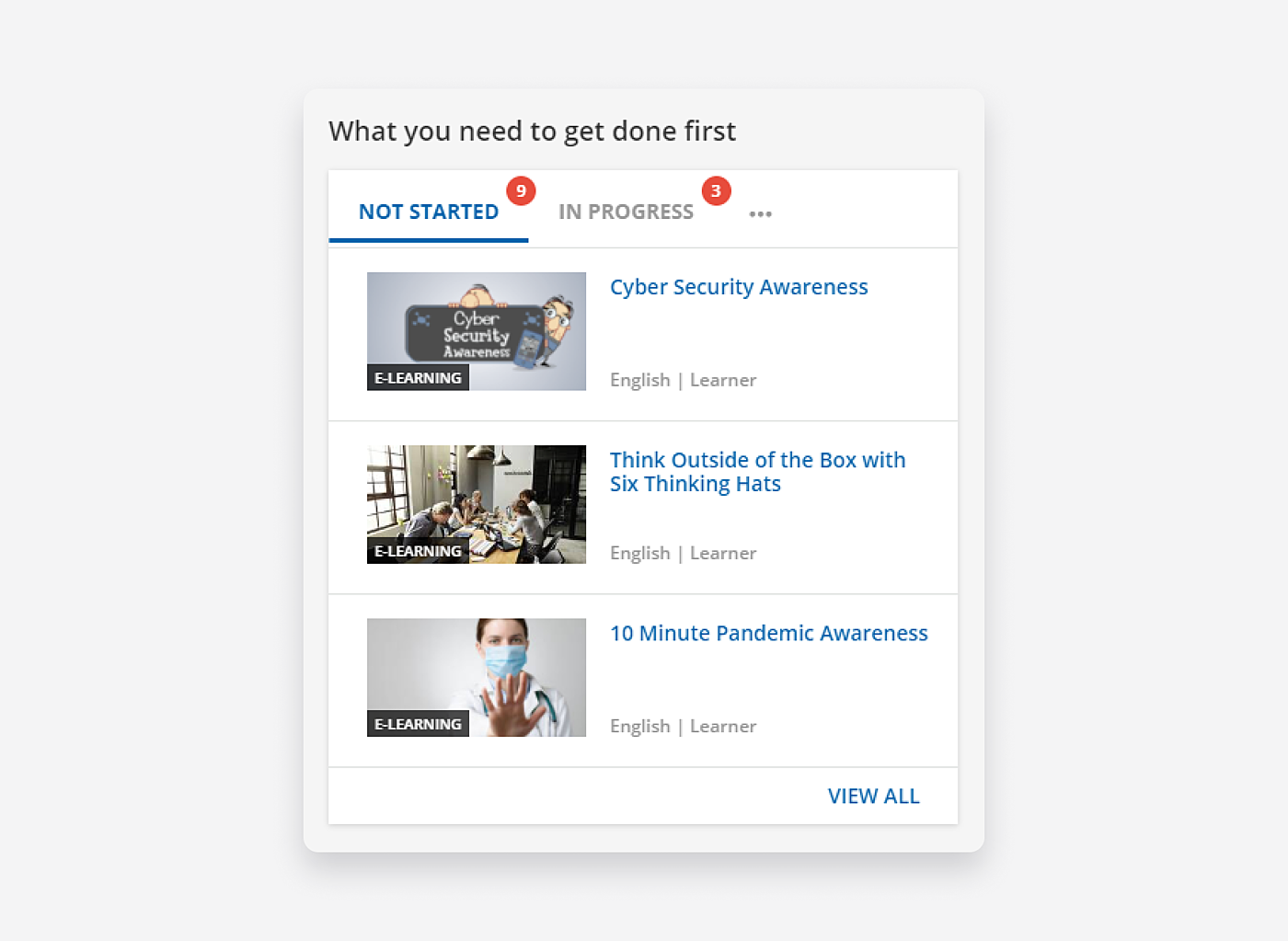 Source:
Source: 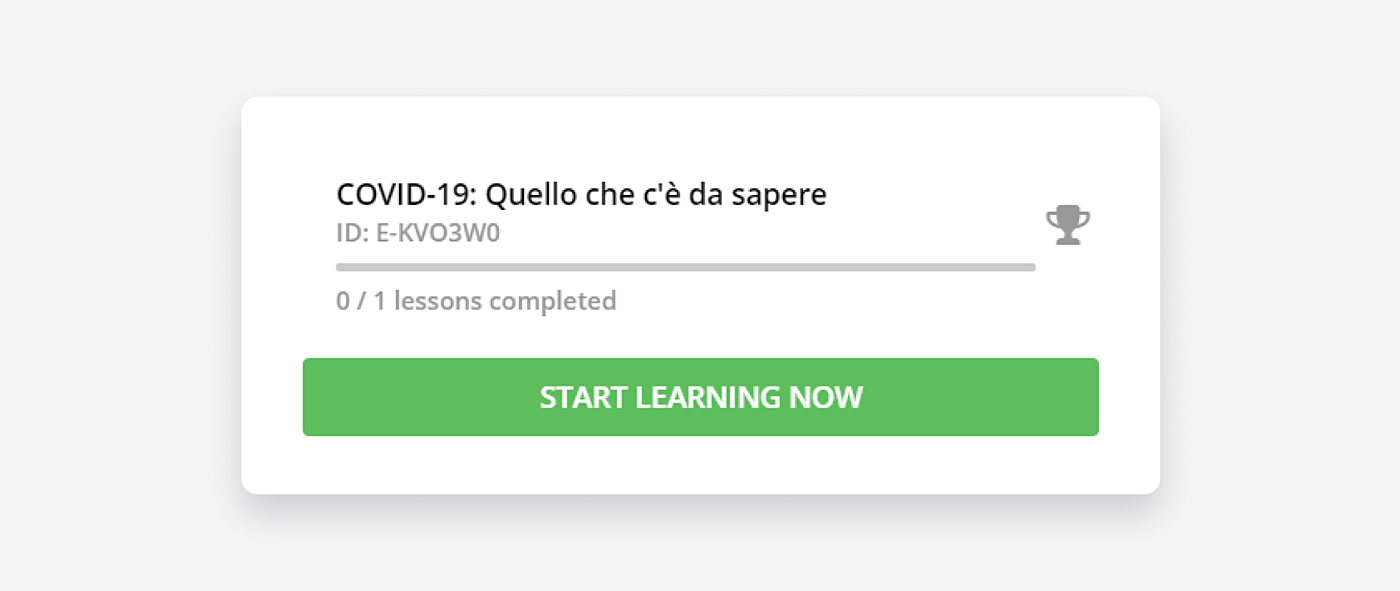
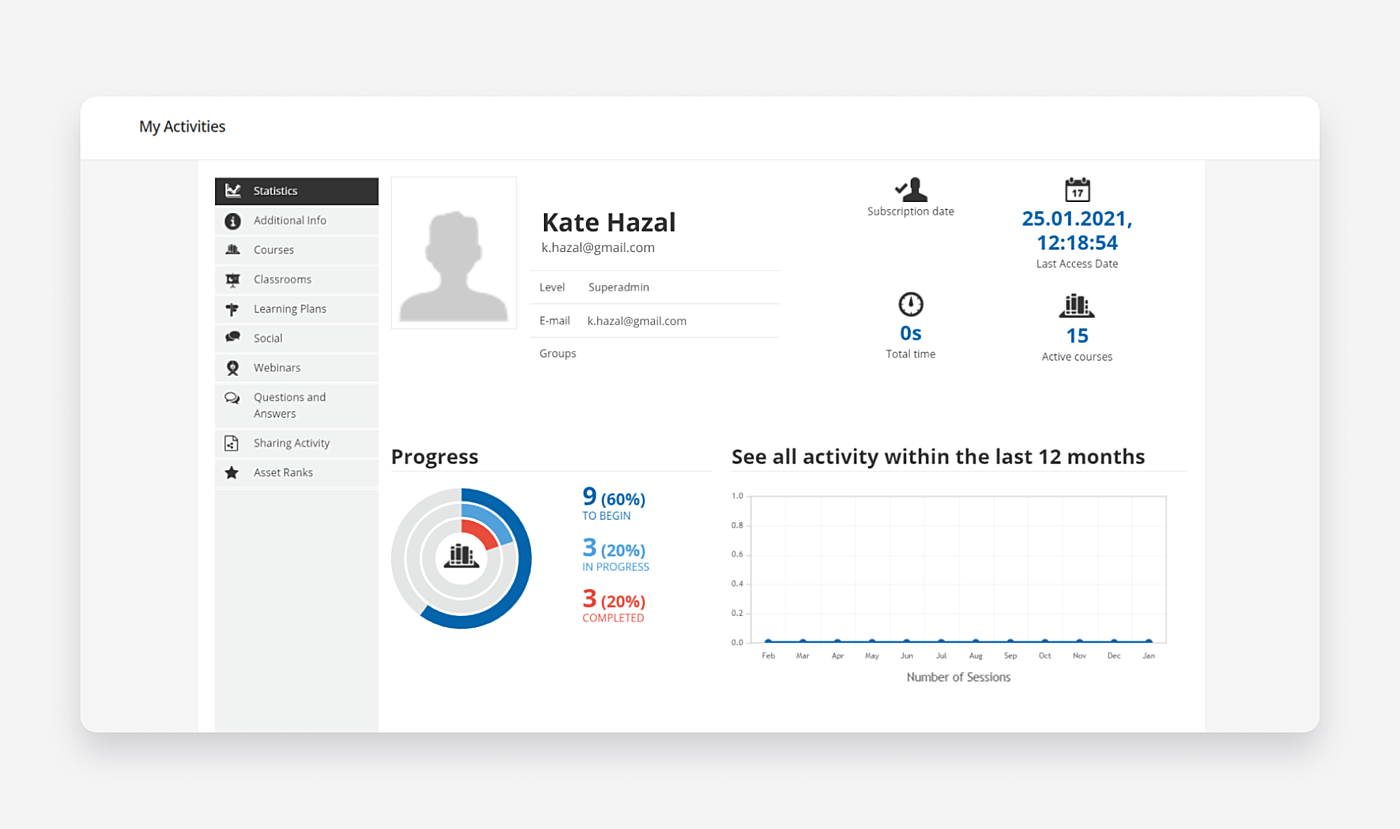 Source:
Source: 